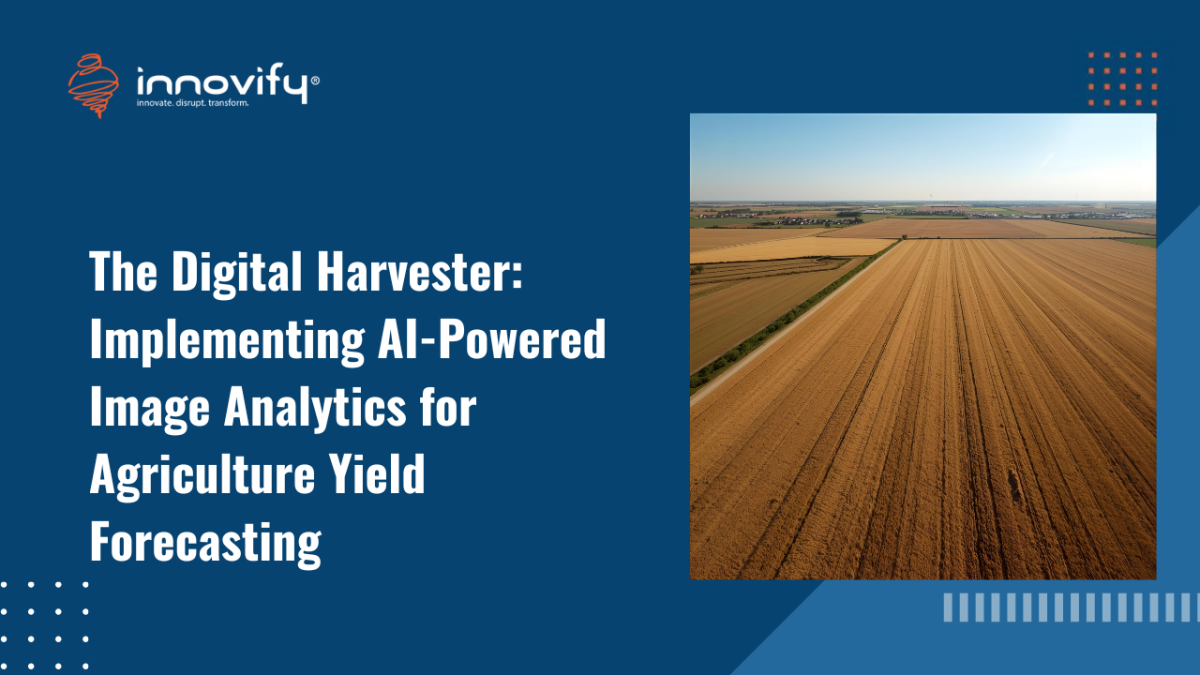AI/ML
The Digital Harvester: Implementing AI-Powered Image Analytics for Agriculture Yield Forecasting
Implementing AI-powered image analytics for agriculture yield forecasting
The agricultural sector, the foundation of human civilization, is one of the last frontiers for large-scale digital transformation. Farmers operate in a world defined by uncertainty: unpredictable weather, evolving pest threats, and fluctuating global markets. The traditional method of assessing crop health and predicting yield – manual inspection and historical averages – is inefficient, imprecise, and incapable of scaling to modern demand. To achieve the precision required for sustainable and profitable farming, the industry must embrace next-generation technology. The key lies in implementing AI-powered image analytics for agriculture yield forecasting, a disruptive application of Computer Vision (CV) and machine learning that is turning agricultural uncertainty into strategic foresight.
The Precision Imperative in Modern Farming
Maximizing yield is no longer about simply applying more resources; it is about precision. Over-application of fertilizer and water is wasteful and environmentally damaging, while under-application leads to poor crop quality and reduced output. The challenge is in obtaining highly granular, field-specific data on plant health across vast tracts of land. A human eye cannot detect the subtle nutrient deficiencies or early signs of disease that appear at the cellular level, often days or weeks before they become visible to a human eye.
The Role of Computer Vision in AgriTech
AI-powered image analytics solves this problem by providing a non-invasive, scalable method for continuous crop monitoring. This process typically involves three key steps:
1. Data Acquisition: The Eyes in the Sky
High-resolution images are the raw input for the AI system. These are primarily captured by three sources:
- Satellites: Provide wide-area, frequent monitoring for macro-level analysis (e.g., large-scale drought or regional yield estimates).
- Drones (UAVs): Offer sub-centimeter resolution, flying over fields to capture highly detailed images for individual plant-level analysis.
- Ground-Based Sensors/Robotics: Capture close-up, multi-spectral images of individual plants to detect subtle physiological stress.
These sensors capture data beyond the visible spectrum, including Near-Infrared (NIR), which is crucial for determining plant health and photosynthetic activity through indices like the NDVI (Normalized Difference Vegetation Index).
2. Computer Vision Processing: Turning Pixels into Insights
The raw imagery is fed into powerful Deep Learning models, primarily Convolutional Neural Networks (CNNs), which are trained on massive, annotated datasets of healthy and stressed crops. The models perform three critical tasks:
- Semantic Segmentation: This process divides the image into segments, accurately distinguishing between plants, soil, weeds, and water. This allows the system to calculate the precise percentage of ground cover occupied by the crop, a critical factor for yield.
- Object Detection: The model is trained to identify and count specific objects, such as individual fruits, flowers, or ears of grain. By accurately counting crop elements, the system can project the final yield weeks before harvest.
- Classification: This involves classifying the state of the crop – healthy, nutrient-deficient, or afflicted by a specific pest or disease. This enables targeted intervention, known as site-specific treatment, which dramatically reduces the use of expensive chemicals and water.
3. Predictive Modeling: Forecasting the Future
The insights from image analytics are not used in isolation. They are integrated with other data sources—soil composition, localized weather forecasts (time-series data), historical yield records, and planting dates – to create a sophisticated predictive model. This hybrid model uses the CV data as a real-time health input to forecast the final yield, often with an accuracy rate exceeding 95%.
The Strategic and Financial ROI
The benefits of implementing AI-powered image analytics for agriculture yield forecasting translate directly to the farm’s bottom line and its sustainability.
- Resource Optimization: Farmers can use the precise data to apply fertilizer, pesticides, and irrigation only where and when needed. This drastically cuts operational costs – fertilizer and chemicals being among the most expensive inputs – and conserves water.
- Risk Mitigation: Early detection of disease or pest infestations allows for swift, targeted treatment, preventing the spread of the problem across the entire field and saving the harvest.
- Supply Chain Planning: Accurate yield forecasts enable farmers to negotiate better prices, secure contracts, and plan their harvest logistics (labor, storage, transportation) with greater certainty. This moves the farmer from price-taker to strategic partner in the supply chain.
By empowering farmers with the Digital Harvester – an AI system that provides unprecedented visibility and predictive power – AgriTech is making farming more sustainable, efficient, and profitable, ensuring global food security for the future.
Ready to implement AI-powered image analytics for your farm or AgriTech business? Book a call with Innovify today.




